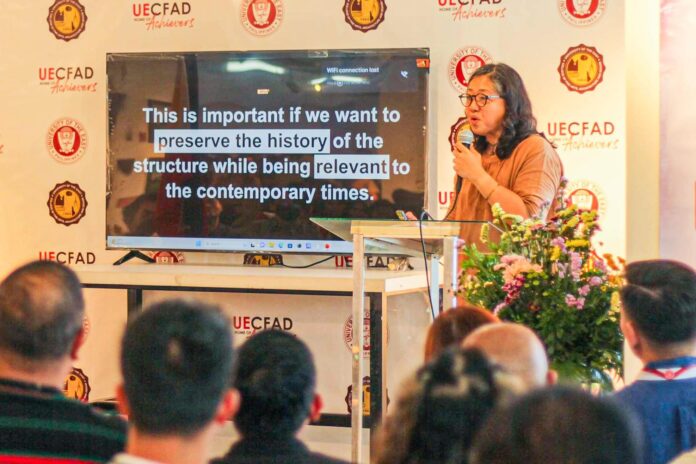
THE preservation and repurposing of historic structures must be backed by proper research to avoid “cultural disrespect,” an interior design faculty said.
Asst. Prof. Mary Ann Venturina-Bulanadi of the College of Fine Arts and Design reminded interior design students that respecting the historical and cultural background of a structure is key to the adaptive reuse concept.
Bulanadi said designers could avoid causing disconnect and disharmony between a structure and the community by fostering respect.
“When we apply it to the adaptive reuse of a heritage structure, cultural sensitivity entails respect for its history, design, and strength as a community asset,” Bulanadi said in the “Speak Your Design” seminar on Sept. 26. “It ensures that the structure’s historical, socio-cultural, and architectural significance are valued.”
“We bridge the past with the present through adaptive reuse by giving a new function to a heritage-rich pre-existing structure that contemporary users can appreciate while being aware of what the space was in its past life,” she told the Varsitarian.
Bulanadi demonstrated the adaptive reuse process by detailing her work in heritage structures like the Bahay Nakpil-Bautista in Quiapo, Manila.
The Bahay Nakpil-Bautista is the ancestral home of the prominent Nakpil clan. It has been turned into a heritage museum.
“Together with research, adaptively reusing historic spaces for contemporary use offers students and people from all walks of life a clearer understanding of history and culture,” Bulanadi said.
“The portions of history that were earlier uninviting or uninteresting are given better appreciation as they experience it through the space,” she said.
Preserving culture and history through the adaptive reuse concept will also allow Filipinos to “connect to their roots,” she said.
The “Speak Your Design” seminar-workshop also featured a discussion on culture and heritage preservation by historian and conservation architect Gerard Lico of the University of the Philippines Diliman.
It was organized by interior design students from the University of the East – Caloocan. Jan Alyanna G. Tamaray with reports from Sofiah Shelimae J. Aldovino













